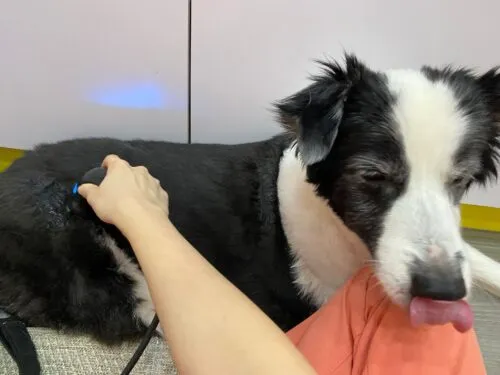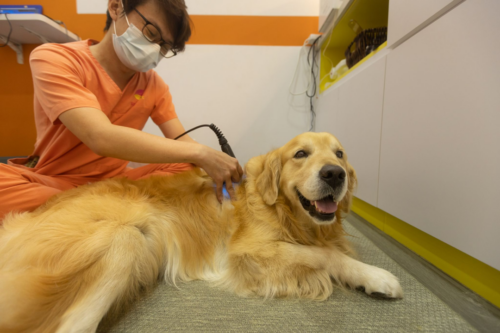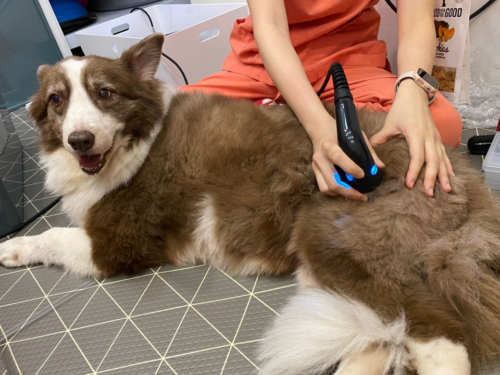Ultrasound therapy offers numerous benefits for dogs and cats, providing targeted relief for a variety of conditions. Some of the key advantages include:
Non-invasive treatment: Ultrasound therapy is a painless, non-invasive technique, ensuring a comfortable and stress-free experience for your pets.
Enhanced healing: By stimulating the cells responsible for tissue repair, ultrasound therapy promotes faster recovery from injuries and surgeries.
Reduced inflammation: The treatment helps decrease inflammation in the affected areas, alleviating discomfort and supporting the healing process.
Pain relief: Ultrasound therapy can provide significant pain relief for pets suffering from acute or chronic pain due to various conditions.
Improved blood circulation: The treatment encourages blood flow to the targeted area, providing essential nutrients and oxygen for optimal healing.
Increased flexibility: Ultrasound therapy can improve joint mobility and flexibility, particularly in pets suffering from arthritis or other joint-related issues.
Muscle relaxation: The gentle heat produced during treatment helps relax tense muscles, reducing stiffness and discomfort.
Soft tissue repair: Ultrasound therapy can accelerate the healing of soft tissue injuries, such as sprains, strains, and tendonitis.
Scar tissue reduction: By breaking down scar tissue and adhesions, the treatment can improve the function and flexibility of affected areas.


Performing ultrasound therapy for dogs and cats requires specific equipment to ensure a safe, effective, and comfortable treatment experience. Key components include:
Ultrasound machine: A specialised device that generates high-frequency sound waves, designed specifically for veterinary use.
Ultrasound probe: A handheld transducer used to transmit sound waves into the targeted tissue, available in various shapes and sizes to accommodate different treatment areas.
Ultrasound gel: A water-based, conductive medium applied to the skin to facilitate sound wave transmission and eliminate air pockets between the probe and the skin.
Treatment table: A comfortable, padded table that allows the pet to lie down or be positioned appropriately during the therapy session.
Adjustable intensity settings: The ultrasound machine should have adjustable intensity settings to customise the treatment according to each pet’s individual needs and condition.
Cleaning supplies: Proper cleaning and disinfection materials for the ultrasound probe and treatment area are essential for maintaining a hygienic environment.
Ultrasound therapy is generally considered a safe and non-invasive treatment for dogs and cats. However, as with any therapeutic intervention, there are potential side effects that pet owners should be aware of. Some common side effects include:
Mild discomfort: Pets may experience temporary discomfort or sensitivity in the treated area during or immediately after the therapy session.
Overheating: If the ultrasound therapy is performed with excessive intensity or for a prolonged duration, it may cause the targeted tissue to overheat, potentially leading to discomfort.
Skin irritation: Some pets may develop mild skin irritation or redness at the site of the treatment, although this is typically short-lived and resolves on its own.
Ineffective treatment: In some cases, ultrasound therapy may not provide the desired results or may be less effective than anticipated for a particular condition.
